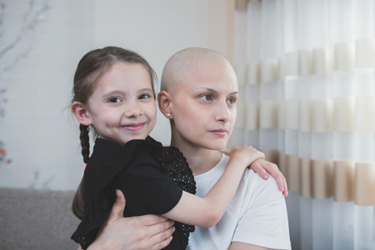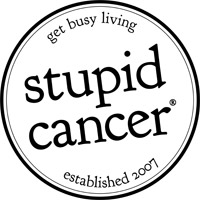Addressing Barriers To Adolescent And Young Adult Participation In Cancer Trials
By The Staff At Stupid Cancer, Inc.

While the challenges of cancer diagnosis, treatment, and survivorship are well-known, adolescents and young adults (AYAs), ages 15-39, have specific hurdles. What’s more, challenges that occur in this age group for clinical care are mirrored in clinical research, where a deficit of AYAs are represented.
Over the past two decades, multistakeholder efforts have begun to move the needle for AYA cancer care. In 2006, the NCI released a report called Closing the Gap: Research & Care Imperatives for AYAs with Cancer, which was a turning point in the AYA oncology landscape. Prior to this time, there was little to no attention focused on the specific psychosocial needs of this group, and the five-year survival rates for AYAs had not improved in decades.2 Stupid Cancer was founded the following year, in 2007, to raise awareness and build support for this overlooked patient community. Then in 2012, the National Comprehensive Cancer Network published the first set of guidelines for this population, and in the past decade dozens of cancer centers have established AYA-focused clinics and programs.
However, there is still a long way to go to ensure better outcomes for this vulnerable patient population. Part of attaining those outcomes is improving AYA access to and enrollment in clinical trials. But first, here is a primer on the barriers AYAs face to clinical care alone.
Challenges To AYA Cancer Care
AYA cancer challenges begin in diagnosis and can extend well into survivorship. Among the most pressing concerns are:
Late diagnosis —Adolescents and young adults are more likely to receive a late diagnosis or to be misdiagnosed compared to other age groups, as doctors are more inclined to minimize their symptoms or dismiss the likelihood of cancer.
Uninsured/underinsured — Younger adults are far more likely to be uninsured or underinsured and may therefore be less inclined to seek medical care short of an emergency. Because of these delays in diagnosis, AYAs are often diagnosed with more aggressive or advanced stage disease.
Care in the community — The majority of AYAs are treated in the community setting, rather than university hospitals or larger institutions, which are more likely to have dedicated AYA resources, so they are negatively affected in terms of treatment and survivorship.
Fertility preservation — In the rush to treatment, some patients are left without time to understand their options to preserve their fertility or are simply never given the option to do so.
Age-related social harm — There are negative social and emotional implications to lumping AYA patients with others who are significantly younger or older.
Insensitivity from friends and family —The AYA patient population frequently vents about the “stupid things people say.” These kinds of upsetting interactions with peers and acquaintances can add up to a truly devastating mental health burden that is quite different from the experience of older patients.
Navigating life changes — At a time of huge transition — finishing school, entering the workforce, and raising a family — AYAs with cancer take on additional burdens that are likely to delay, complicate, or prevent the accomplishment of these key life milestones.
Financial concerns — In the United States, paying high out-of-pocket costs for lifesaving treatment may be out of reach for many AYAs who have not built up adequate savings and are already struggling financially. The long-term financial implications of medical debt may follow AYA patients long after treatment ends.
Future quality of life — While we can celebrate that 85.8% of AYA patients will survive the five-year mark,3 long after treatment, AYA cancer survivors must cope with long-term effects and many even experience secondary cancers, some as a direct result of their lifesaving treatment.
Two Major Hurdles For AYA Clinical Trial Participation
Understanding the aforementioned hurdles to care, it comes as little surprise to learn that AYAs are underrepresented in academic research and clinical trials compared to their pediatric peers. We have seen recent improvement in total AYA clinical trial participation rates, with 14% of those in that age group according to a 2022 study (an increase of 4.5% from 2006 participation rates).4 That level of engagement is encouraging compared to the overall trial participation of approximately 5%, but it pales in comparison to pediatric clinical trial enrollment of up to 60%.5
Two major barriers to AYA cancer trial participation are awareness of trial opportunities and location of treatment. It stands to reason that AYAs cannot participate in clinical trials if they don’t know the study exists; research has shown that 63% of patients didn’t know whether there was a relevant clinical trial available for them.6 This is largely related to where patients are being treated. Most clinical trials are conducted at academic institutions and in the pediatric setting, but that’s not where the average AYA receives treatment: only 8% of AYAs are treated at academic institutions and as few as 2% are treated in a pediatric hospital.7 Providers outside of the academic or pediatric setting are less likely to be conducting studies and are therefore unlikely to refer patients to them.
But not knowing about trial opportunities doesn’t mean that this patient population isn’t interested in enrolling. These young patients are motivated to pursue the best treatment for themselves and to improve outcomes for those that come after them. Within our Stupid Cancer community, we hear from patients who are eager to participate in research and even go to great lengths — such as extensive research, personal outreach, and travel — to self-advocate for experimental treatments under compassionate use. Our AYA community members are aware of and frustrated by their lack of representation in trials and are eager to step forward when they can. One study found that when AYA patients were aware of an available trial, 68% participated.8 These numbers show that when given the opportunity, AYAs are more likely to participate in trials than other age cohorts.
Addressing Participation Obstacles For AYAs
To lower the barriers for AYA clinical trial enrollment, studies could be less centralized outside of major academic hubs to allow for greater participation in the community setting. Similarly, trial designers could focus on stronger outreach to adult oncology providers beyond their institutions for broader recruitment and patient referrals. Given the tech-savviness of this demographic, digital health tools could also be a useful strategy to support clinical trial enrollment. According to a recent Stupid Cancer poll, 100% of AYA respondents have used a patient portal and 75.9% use digital health tools very often. Promoting clinical trial opportunities or sharing clinical trial databases directly within apps or tools that patients are already engaged with could be a powerful driver of clinical trial awareness and participation.
Looking at the larger picture of the AYA cancer experience, common themes emerge. These patients, in the prime of their lives, are thrust into a confusing system that is often not accommodating to their age-specific needs and issues. While resources exist, many patients are not connected to them and are left to navigate a complicated medical and social landscape on their own. Without access to adequate resources, they are forced to become their own best advocates. In this process, many AYAs experience extreme social isolation and mental health distress. They are longing for a community of support.
References:
- Cancer Among Adolescents and Young Adults (AYAs) — Cancer Stat Facts
- Closing the Gap: Research & Care Imperatives for AYAs with Cancer, NCI, 2006. https://deainfo.nci.nih.gov/advisory/ncab/archive/139_0906/presentations/AYAO.pdf
- Cancer Among Adolescents and Young Adults (AYAs) — Cancer Stat Facts
- Cancer: Vol 128, No 21 (wiley.com)
- Clinical Trials (childrensoncologygroup.org)
- June 2018 - Volume 41 - Issue 6 : American Journal of Clinical Oncology (lww.com)
- Am J Clin Oncol. 2013
- Pediatr Blood Cancer. Jan 2019
 About The Experts:
About The Experts:
Stupid Cancer helps empower everyone affected by adolescent and young adult (AYA) cancer by ending isolation and building community. Through online and in-person programming, Stupid Cancer provides age-appropriate information and resources and builds connection in the AYA community so patients, survivors, caregivers, and professionals can Get Busy Living.
